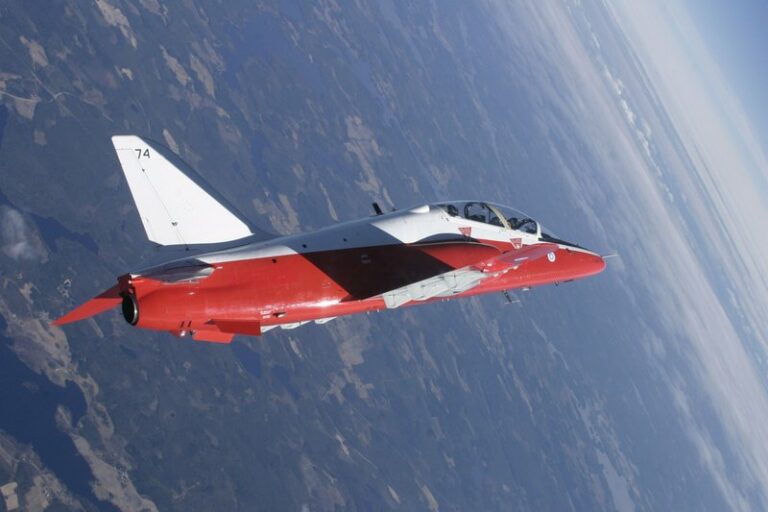Finland’s Air Force Command has discreetly dropped a swastika logo from its unit emblem — after a century — and replaced it with a neutral insignia featuring a golden eagle.
The change, made to avoid false and uncomfortable associations with Nazi Germany’s notorious logo, took place in January 2017 but wasn’t announced publicly by the Nordic nation’s military at the time.
University of Helsinki world politics professor Teivo Teivainen, who is researching the use of swastikas in Finland during the 1920s and 1930s, noted the unit emblem issue in a Twitter post this week that brought the modification to public attention.
Ilmavoimien esikunnan #hakaristitunnus RIP. Kuulostaako asialta, jota ei tule koskaan tapahtumaan, koska kunniakasta symbolia ei vaihdeta? Saanen siis tarjoilla uutisen: se on vaivihkaa vaihdettu. 1/n (ketju jatkuu) #hakaristi #ilmavoimat #puolustusvoimat #turpo pic.twitter.com/ID3BLhuFCA
— Teivo Teivainen (@TeivoTeivainen) June 30, 2020
Brig. Gen. Jari Mikkonen at Air Force Command Finland acknowledged Thursday to The Associated Press that the historical swastika emblem had caused confusion among international colleagues over the years.
“Undeniably, we’ve had to explain from time to time the history of the (Finnish Air Force) swastika that dates back to 1918,” Mikkonen said. “It caused misunderstandings with our foreign partners, so continuing to use it was considered inappropriate and unnecessary.”
The swastika is an ancient symbol and a religious icon in many cultures dating back thousands of years. Most people associate it with Nazi Germany’s notorious swastika flag, which was modeled after the flag the German Nazi Party used starting in 1920 and throughout Adolf Hitler’s years as leader of the party and the country.
The Finnish Air Command swastika emblem dated back to March 1918, when the Finnish Air Force was created. Finland declared its independence from Russia a few months before, on Dec. 6, 1917.
Swedish Count Eric von Rosen donated to Sweden’s newly independent neighbor the first plane in air force, a Thulin Typ D reconnaissance plane with a blue swastika — the count’s personal good luck charm — painted on the wings.
The Finnish air force soon after adopted the symbol — a blue swastika on a white background — and used it as the national insignia on all its planes from 1918 until 1945. The swastika still remains on some Air Force unit flags and decorations as well as on the insignia of the Air Force Academy,
Von Rosen, an upper-class explorer and ethnographer, was the brother-in-law of Hermann Goering, a decorated World War I German fighter pilot who became an early Nazi Party member under Hitler who led Germany’s Luftwaffe during World War II, But the Swedish count employed the swastika before the Nazis did.
The Finnish air force stressed that its use of the symbol had no connection to Nazi Germany, although Finland entered into a reluctant alliance with the Third Reich during World War II.
“The air force is proud of its glorious traditions,” Brig. Gen. Jari Mikkonen told the AP. “We’re not ashamed of the swastika on our decorations and unit flag.”
(AP)











One Response
The swastika will no longer be used………..Finnish!